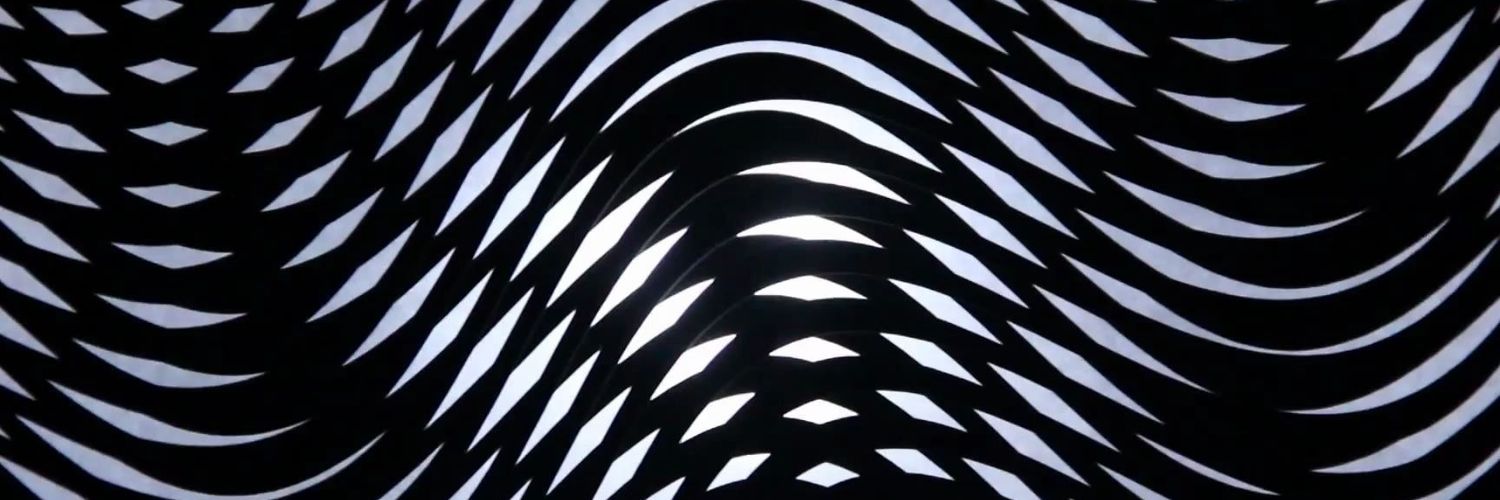Very often, when using the phone camera to take pictures of the TV or computer screen, we will find that there will be a lot of colored or gray streaks on the pictures taken, like the one in the picture below.

What is this thing? And how does it come about?
This image is called the Moiré pattern.
The Moire pattern is formed by the visual effect of interference between two lines or two objects at a constant angle and frequency.
It's hard to understand, right? Let's get started from the very beginning.
If we have two columns of differently spaced black stripes in front of us, as follows

Then we try to slowly bring the two columns of stripes closer together, and because of the different spacing between the stripes, there will be some places where they overlap, producing a larger area of stripes, as follows

When the two columns of stripes overlap completely, a pattern similar to the pulse wave pattern is created, with alternating dense stripes and sparse stripes, as follows.

Such a pattern is called a Moiré pattern.
Why does it appear in the photos taken by the camera?
Because the camera's light-sensitive element is composed of countless small light-sensitive points. It is like a group of people standing in a square formation, each representing a light-sensitive point, but the distance between each light-sensitive point is very close.

But since I said very close, that means there is still some distance in between.

Similarly, all monitor screens today are basically made up of very small pixel dots.

As mentioned above, the Moiré pattern occurs when the sensor uses a sensor with gaps to photograph pixel dots with gaps, as the gaps are relatively close but not identical.
By analogy, it is not only the screen that causes Moire in the camera, but also objects that are striped and repeated with a fixed frequency.


Of course, the existence of moiré is not useless, and the security of banknotes is a very extensive application of the Moiré pattern.
In a Chinese movie, "Project Gutenberg", a group of criminal gangs making counterfeit banknotes use hand-painting in order to create as realistic a dollar as possible, why do they do this?
In fact, this is how most countries manufacture their banknotes. Most of the patterns on the banknotes are not printed out using printers, but rather using many different types of printing methods.

If you look closely, you can find a number of striped patterns on it. And all color printers print line by line.

Although there is no gap in each line printed when printing, when the computer is parsing the picture or the copier is detecting the scanned image, it identifies the color of each dot on the picture one by one like a camera's photocell and converts it into the form of data for storage.
This operation produces a sort of streak-like resolution effect so that the Moiré pattern is visible after the banknote is printed.
This also acts as an anti-counterfeit, and the conspicuous Moiré pattern will make it immediately obvious that it is a counterfeit coin.
Although the Moiré pattern can be used as an anti-counterfeiting effect, it still affects people's visual experience most of the time. Is it really impossible to eliminate the Moiré pattern?
If the gap between the two columns of stripes is increased and the gap between the widths of the stripes becomes larger, things start to look different.

If these two columns of stripes gradually approach each other

We are then surprised to find that the Moiré pattern no longer appears, and although the overlapping stripes also become denser, there is no periodic effect.
Based on this principle, various methods of eliminating the Moiré pattern have been developed.
An Optical Low Pass Filter (OLPF)
The OLPF is a filter mounted on the front of the camera lens, it is equivalent to a blurring filter, so that the camera to capture the streak-like objects less obvious, which will make the phenomenon of the Moiré pattern greatly reduced, but also has a great impact on the photo quality, will make the photo clarity is reduced by a lot.
Higher spot density of the sensor
As mentioned before, the Moiré pattern appears because of the interference between the stripe of the sensor dot and the stripe of the pixel dot, and the Moiré pattern can be eliminated if the stripe size is changed or the gap is adjusted, so the Moiré pattern can be avoided if the sensor dot of the camera is made into a smaller size.
So the next time you take a picture of the Moiré pattern, you will think of a series of reasons for its formation, but you only need to slightly change the camera angle of your phone to take a picture without Moire at a certain point.





Comments